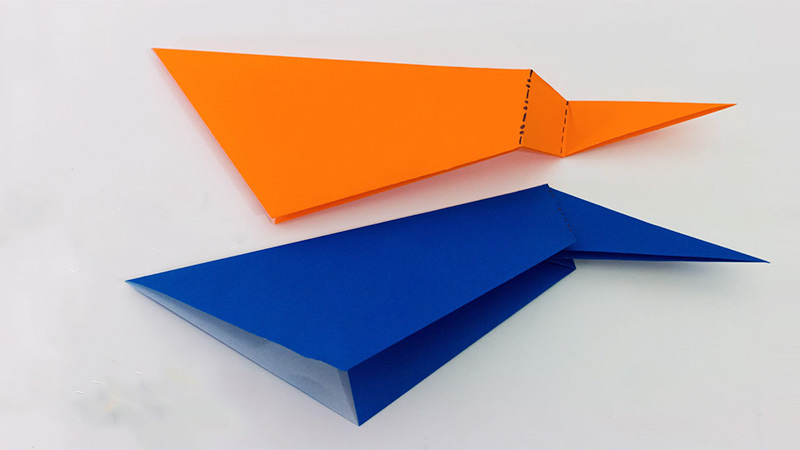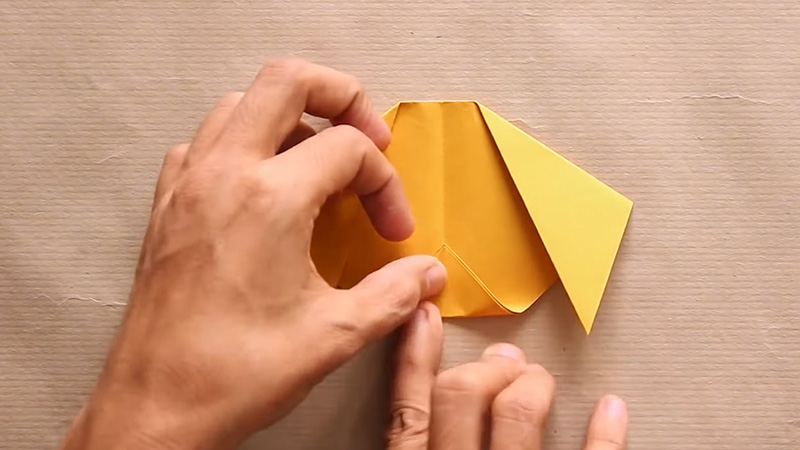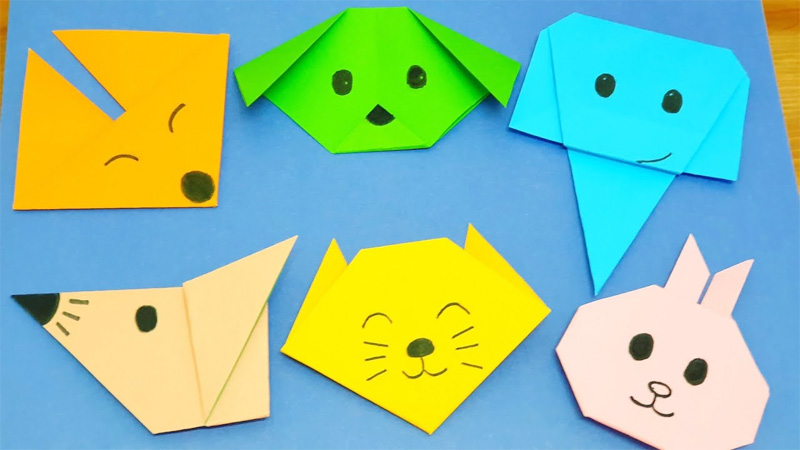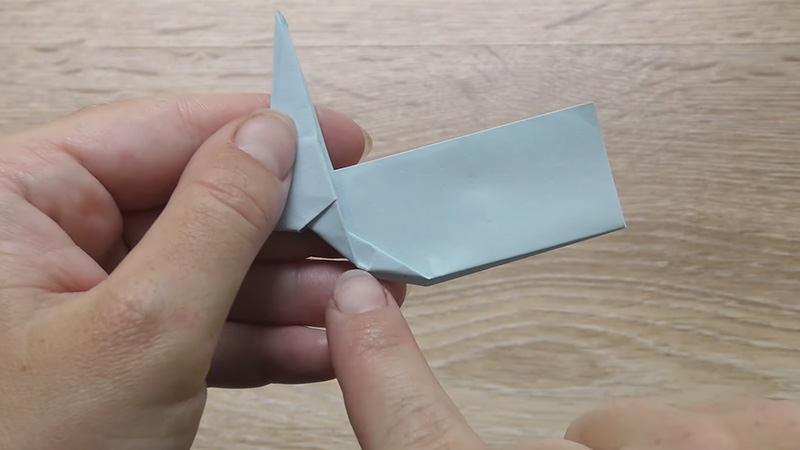In the intricate world of origami, where the art of folding paper yields astonishing creations from a seemingly simple sheet, the term “crimp” emerges as a fundamental technique.
Origami, deeply rooted in Japanese culture, relies on the meticulous manipulation of paper to craft complex sculptures without cutting or adhesive.
Crimping, a pivotal concept in this art form, involves strategically folding precise segments of paper to achieve desired shapes and dimensions.
These precise, strategic folds breathe life into flat sheets, transforming them into multidimensional wonders.
In this exploration, we delve into the art of crimping in origami, unveiling the precision, creativity, and ingenuity it brings to this timeless craft.

What Does Crimp Mean in Origami?
Crimping is a technique in origami that involves creating small, precise, and often strategically placed folds in the paper to achieve a desired shape or structure.
These folds are typically made at specific points on the paper, and they play a crucial role in transforming a flat sheet of paper into a three-dimensional object with depth, volume, and intricate details.
While origami may seem simple on the surface, it involves a multitude of techniques and concepts, one of which is “crimping.”
Here’s how crimping works:
Fold Placement
Crimps are usually made at certain points on the paper to define features or create complex folds. The precise location of these folds depends on the design of the origami model.
Partial Folding
To create a crimp, the origamist carefully folds only a portion of the paper at the chosen point, leaving the rest of the paper unaffected.
This partial folding requires precision and attention to detail to ensure the final result meets the intended design.
Accuracy
Achieving an accurate crimp is essential. Even a slight misalignment or inconsistency in the fold can affect the overall appearance and stability of the finished origami model.
Use in Complex Models
Crimping is often employed in complex origami models, such as animals, insects, or intricate geometric shapes, where achieving lifelike details or intricate structures is the goal.
These small, precise folds can turn a simple flat sheet of paper into a three-dimensional masterpiece.
Creativity
While crimping is a technical skill, it also allows for creativity and personal expression in origami.
Skilled origamists can experiment with different crimp placements and variations to add their unique touch to a design.
What Does Crimp Mean in Origami Animals?

In the realm of origami animals, the term “crimp” represents a crucial technique that lends intricacy and realism to the art form.
Origami, the Japanese tradition of paper folding, encompasses the creation of lifelike animal models through a delicate balance of skill and creativity.
Crimping, in the context of origami animals, refers to the strategic folding of paper to define and refine the creature’s features.
This technique allows origamists to add depth, dimension, and lifelike characteristics to their animal creations.
By precisely folding specific portions of the paper, origami artists can shape limbs, tails, heads, and other distinctive features, giving their models a more realistic and captivating appearance.
Crimping is a skill that requires precision and an understanding of the animal’s anatomy. Through this technique, origami enthusiasts breathe life into their creations, transforming flat sheets of paper into captivating representations of the animal kingdom.
Whether crafting a graceful swan, a fierce tiger, or a charming squirrel, crimping is a fundamental tool in the origami artist’s toolbox, allowing them to sculpt intricate and expressive animal forms with paper and imagination.
Types of Crimps

In origami, crimps come in various types, each serving a distinct purpose in creating intricate paper sculptures.
Here are some common types of crimps:
Simple Crimp
This is the most basic type of crimp, involving a single fold in the paper. It is often used to create minor details or refine the shape of a specific part of an origami model, such as a limb, wing, or tail.
Inside Crimp
Inside crimps are folds made on the interior of a paper model. They are typically used to create hidden details or structures that are not visible from the outside, adding complexity to the design.
Outside Crimp
Unlike inside crimps, outside crimps are folds that are visible on the exterior of the origami model. They are often used to define features like the edges of wings, the outlines of facial features, or other prominent details.
Sink Fold
A sink fold is a type of crimp that involves folding a section of paper inward, creating a cavity or pocket within the model.
Sink folds are frequently used to shape and hide excess paper while forming complex structures like animal heads or intricate geometrical shapes.
Closed Sink Fold
This is a more advanced version of the sink fold, where the paper is folded into a closed pocket, trapping a portion of it inside.
Closed sink folds are employed in complex origami models to create concealed layers and achieve intricate shapes.
Open Sink Fold
In contrast to the closed sink fold, open sink folds create a pocket without trapping any part of the paper inside. They are often used to create concave surfaces, such as in origami bowls or flower petals.
Reverse Fold
A reverse fold is a crimp that changes the direction of a portion of the paper by folding it back on itself. It’s frequently used to create three-dimensional shapes, like the beak of a bird or the snout of an animal.
Squash Fold
The squash fold involves flattening a crimped section of paper by opening it and pressing it flat. This fold is used to expand or shape the paper to create wings, leaves, or other broad surfaces in origami models.
Petal Fold
Petal folds are used to create layered and petal-like structures in origami. They often involve multiple crimps and folds to shape the paper into a flower petal or leaf.
Closed Crimp
Closed crimps are similar to sink folds but are generally used to create detailed structures like fingers, toes, or other fine points in origami models. The paper is folded inward and closed off to form the desired shape.
Open Crimp
Open crimps are folds that create open, often curved shapes, like the curves of a smile or the rounded edge of a character’s clothing. They add dimension and character to origami models.
How to Create a Crimp

Creating a crimp in origami involves making precise and strategic folds in a specific area of the paper to achieve a desired shape or structure.
Here are step-by-step instructions on how to create a basic crimp fold origami:
Materials Needed:
- A square sheet of origami paper
Steps:
Choose Your Fold Point
Start by examining your origami design and determine where you want to create the crimp. This decision will depend on the specific features you want to highlight or shape in your model.
For example, if you’re making an origami animal, you might choose a point for the crimp to define the animal’s head, legs, or tail.
Position the Paper
Place your square sheet of origami paper on a clean, flat surface with the side you want to be the “front” facing up. Ensure that the paper is well-aligned and free of wrinkles or creases.
Partial Fold
At the chosen point, carefully lift and fold only a small portion of the paper. The size and angle of this initial fold will depend on the specifics of your design.
To achieve precision, you can use a ruler or the edge of your fingernail to make a sharp, clean fold.
Press and Crease
After folding the paper, press down firmly along the fold line to create a distinct and sharp crease. The crease is essential for maintaining the desired shape of the crimped area.
Unfold (if needed)
Depending on your origami design, you may need to unfold the paper partially at this stage to continue with the rest of your model. The crease you’ve made serves as a guide for future folds.
Complete Your Origami Model
Proceed with folding the rest of your origami model, taking care to incorporate the crimped area as necessary to achieve the desired shape or detail in your model. The crimped section will serve as a foundational element in shaping your creation.
Fine-Tune
As you work on your origami model, you may find that you need to adjust the crimped area further to refine the shape or add additional details.
This may involve making additional folds or tweaking the existing ones. Pay attention to symmetry and balance to achieve the desired result.
Finish Your Model
Once you’ve completed all the necessary folds and adjustments, follow the remaining instructions to finish your origami model.
Be gentle and precise in your movements to preserve the integrity of the crimped area and ensure that your final creation meets your artistic vision.
FAQS
What Does Crimp Mean in Origami for Kids?
Crimping in origami for kids refers to a technique where you fold a specific part of the paper to create a desired shape or detail in their origami model.
What is an Outside Reverse Fold in origami?
An Outside Reverse Fold is a folding technique used in origami to change the direction of a portion of the paper, folding it outward instead of inward. It is a fundamental fold used to create various shapes and details in origami models.
Can crimping be used in combination with other origami techniques, such as wet folding or modular origami?
Yes, crimping can be combined with various other origami techniques to create complex and intricate models.
Can crimping be used with any type of paper, or does it work best with specific origami paper types?
Crimping can be used with a variety of paper types, but it works best with thin, crisp origami paper.
Wrap Up
The concept of crimping unfolds as a fundamental technique that breathes life into flat sheets of paper, transforming them into intricate, three-dimensional marvels.
This artful manipulation of paper creates shapes, details, and structures, enhancing the realism and complexity of origami models.
Whether used to craft lifelike animals, delicate flowers, or intricate geometric forms, crimping is a cornerstone of the origami repertoire, offering artists a means to infuse their creations with depth and character.
It marries precision and creativity, making it an essential skill for both beginners and experienced folders, enriching the art of origami with its potential for endless exploration and expression.
Leave a Reply